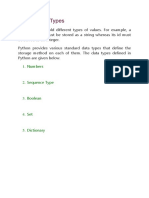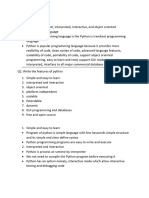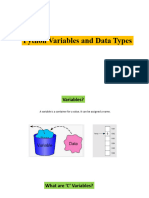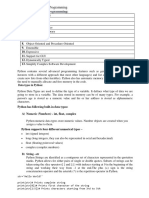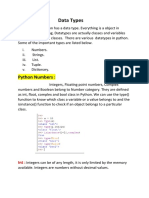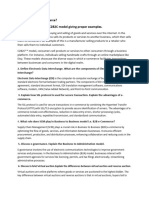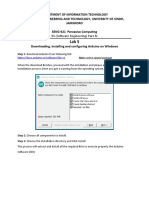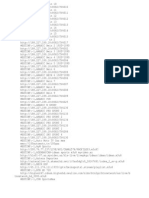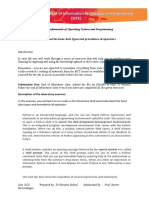0% found this document useful (0 votes)
103 views21 pagesData Types
Python supports several standard data types including numbers, sequences, booleans, sets, and dictionaries. Numbers can be integers, floats, or complex values. Sequences include strings, lists, and tuples. Strings are sequences of characters defined using single, double, or triple quotes. Lists are mutable sequences that can contain elements of different types. Tuples are immutable sequences that use parentheses. Dictionaries store mappings of unique keys to values of any data type. Booleans represent true and false values. Sets are unordered collections of unique elements.
Uploaded by
Saimedha Kota kondaCopyright
© © All Rights Reserved
We take content rights seriously. If you suspect this is your content, claim it here.
Available Formats
Download as PPTX, PDF, TXT or read online on Scribd
0% found this document useful (0 votes)
103 views21 pagesData Types
Python supports several standard data types including numbers, sequences, booleans, sets, and dictionaries. Numbers can be integers, floats, or complex values. Sequences include strings, lists, and tuples. Strings are sequences of characters defined using single, double, or triple quotes. Lists are mutable sequences that can contain elements of different types. Tuples are immutable sequences that use parentheses. Dictionaries store mappings of unique keys to values of any data type. Booleans represent true and false values. Sets are unordered collections of unique elements.
Uploaded by
Saimedha Kota kondaCopyright
© © All Rights Reserved
We take content rights seriously. If you suspect this is your content, claim it here.
Available Formats
Download as PPTX, PDF, TXT or read online on Scribd
/ 21
















